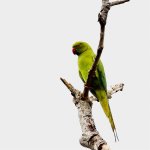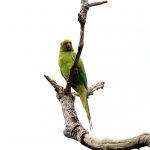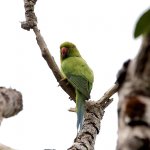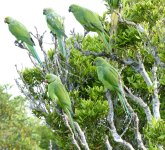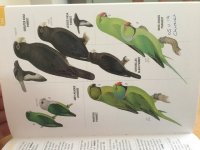Tricky, and I've probably seen more Echoes than most, but I think it's probably a female RNP that has been incubating in a tree cavity, which would explain the heavily abraded tail feathers and apparently too-short tail. It does look quite short-winged though, which would be a point in favour of Echo.
It's a worn bird, and if the colours are true then it's certainly a Ring-necked, as Echoes are a darker, mossier green, and don't tend to wear to the pale yellower hues seen in Ring-necks; however, it feels like either the colour balance of the image or the lighting is a little odd. The undertail in an Echo is a fairly dull, smoky olive-yellow, even in adult males, but often a much brighter yellow, as here, in RNP.
We can rule out a juvenile or female Echo from the red bill, and adult male from the lack of a clear neck ring. The only Echo plumage that fits, therefore, would be an immature male - though in my experience the bill tends to be a dull red in these birds, rather than the brighter crimson on this bird. See attached photo, showing a group including males, females and an immature male.
Female Echoes show the dusky plumage on the face, but it is not evident in males.
One other observation: the feet appear to be quite pinkish - I can't find a photo of an Echo with anything other than blueish grey feet, but there seems to be more variation in this regard, at least in online photos, in RNP.
Either way, it has provided a pleasant diversion from work looking through old photos of Echo Parakeets...




